
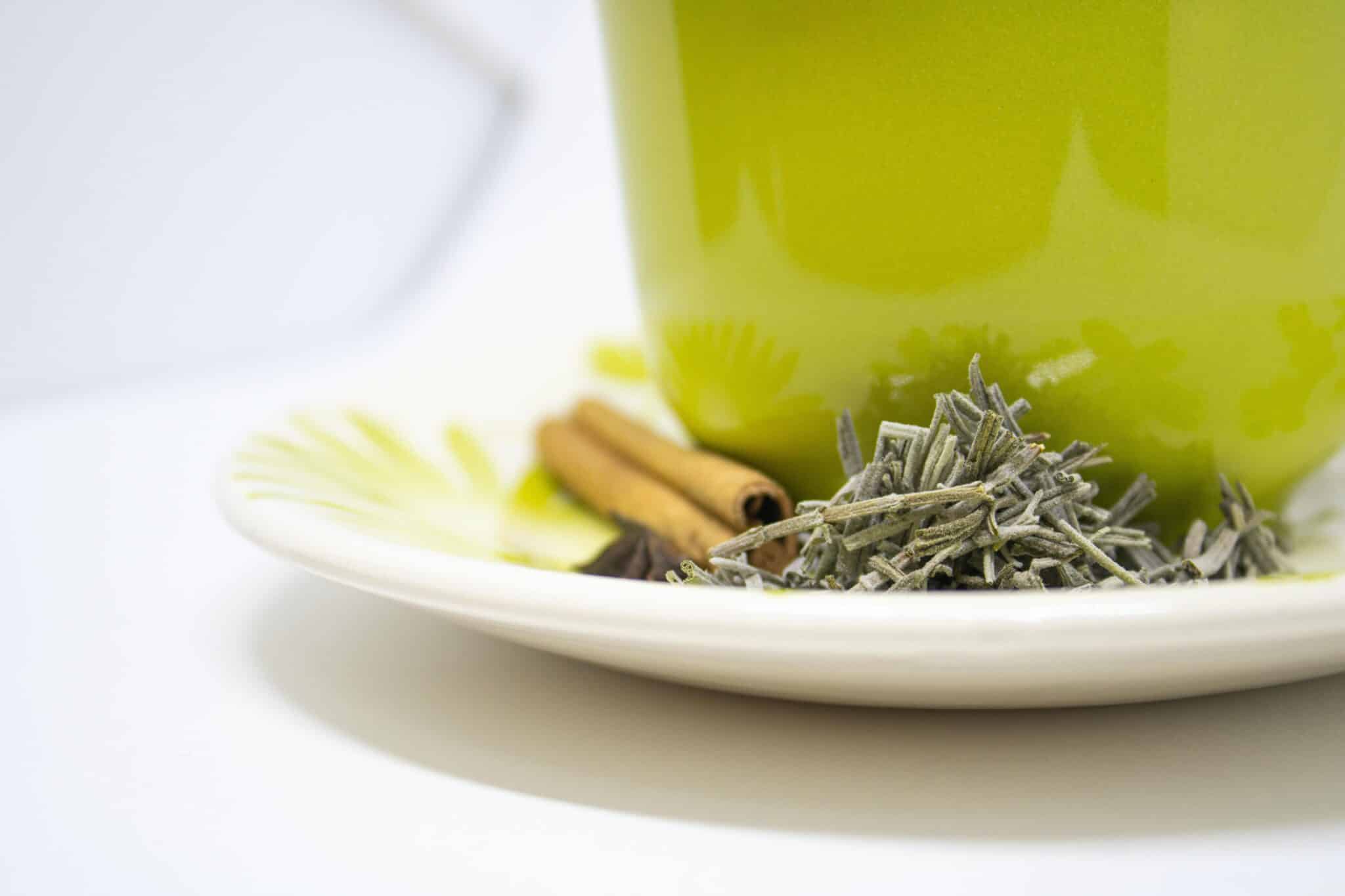
Elton Sipp / Unsplash
From bloating and flatulence to heaviness and weight gain, we have all experienced the traditional symptoms that come along with not properly digesting our foods. Whether you’re vegan, love your steak, or opt for a grain-free, paleo way of eating, adding one of the best digestive enzymes to your diet can help you to better break down your food and absorb nutrients. Learn how the best digestive enzyme supplements work and see which brands we recommend.
What are Digestive Enzymes?
Digestive enzymes are a vital part of our digestive system. Our body naturally makes them in order to help us break down the carbohydrates, fats, and proteins in our diet. In technical terms, they catalyze the breakdown of food to increase the bioavailability of the stored nutrients, making it easier for them to be absorbed into the blood stream. Without these enzymes, the nutrients in your food goes to waste.
There are four primary classes of digestive enzymes: lipases, which help to break down fats; proteases, which help break down proteins; carbohydrases, which break down carbs; and fibrolytic enzymes, which can break down phytic acid and cellulose from plants. Alongside the probiotics found in your digestive system, they ensure that you get the nutrients you need to function at your best.
As we age, and because of factors such as stress and certain health conditions, our bodies sometimes have a harder time producing enough of these enzymes naturally to fully process our daily food intake. This is where adding a digestive enzyme supplement can come in handy. Just like a daily vitamin subscription, these supplements can help supply the missing pieces for your body’s health.
Our Picks for the Best Digestive Enzyme Supplements
Each product featured here has been independently selected by the writer. You can learn more about our review methodology here. If you make a purchase using the links included, we may earn commission.
- Best Overall – Vital Plan Active Enzymes
- Best for Energy – NutraOne Vitality Powder
- Best Plant-Based – Sunwarrior Enzorb
- Best for Vegans – Global Healing VeganZyme
- Best for Probiotic + Enzymes – Onnit Total Gut Health
How We Chose Our Top Products
Here are the factors we considered when comparing the top digestive enzyme brands to recommend.
Full Spectrum
We looked for digestive enzyme supplements that provide multiple enzymes that can help your body process different types of nutrients. These are often referred to as “full spectrum” or “broad spectrum” enzymes.
Plant-Based
We chose brands that utilize plant-based enzymes instead of animal-derived enzymes. Not only are these a more environmentally-friendly option, but just like plant-based protein powders they are also easier and more effective for your body.
Added Ingredients
We compared the other ingredients and vitamins added to any of the digestive enzyme supplements on our list to ensure that they are not fillers but can actually help promote better digestion.
Research
The best digestive enzymes for gut health are backed by clinical research and third-party lab testing. We also highlight supplements that are doctor or nutritionist-formulated.
Complete Reviews of Our Favorite Digestive Enzymes of 2021
Best Overall: Vital Plan Active Enzymes
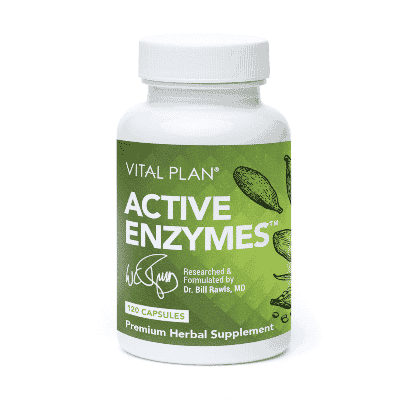
vitalplan.com
- Enzymes – 15 plant-based digestive enzymes
- Strength – 470 mg of enzymes per serving
- Added Ingredients – Cardamom seed, fennel seed
Why buy: Vital Plan Active Enzymes can naturally help promote digestive health. It contains 15 plant-based digestive enzymes that work to help your body more efficiently break down food and absorb the nutrients. It also contains cardamom and fennel for added gastrointestinal comfort. We like Active Enzymes from Vital Plan because it is a doctor-formulated and plant-based option to promote healthier digestion.
Best for Energy: NutraOne Vitality Powder
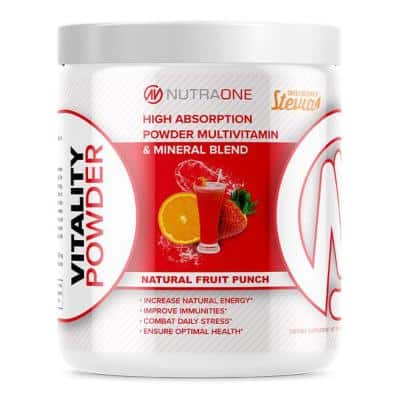
5starnutritionusa.com
- Enzymes – 3 digestive enzyme blend
- Strength – 10 mg of enzymes per serving
- Added Ingredients – Complete multivitamin, oat straw, stevia leaf extract
Why buy: We like NutraOne Vitality Powder because it gives you both a digestive enzyme blend of amylase, protease, and cellulase and a complete multivitamin in one supplement. One serving of powder includes more than your daily dose of vitamins A, C, D, and B12, plus digestive enzymes that can help boost your metabolism to provide more energy from the foods you eat.
Best Plant-Based: Sunwarrior Enzorb

sunwarrior.com
- Enzymes – 25 enzyme blend (9 protein enzymes, 13 carbohydrate enzymes, 2 fat enzymes, 1 free radical enzyme)
- Strength – 500 mg of enzymes per serving
- Added Ingredients – Astragalus extract, notoginseng extract, rice extract, vegetable capsule, trace minerals
Why buy: A completely plant-based formula, this digestive enzyme supplement is vegan, gluten-free, non-dairy, soy-free. It contains AstraZyme, a proprietary blend of enzymes, extracts, and minerals designed to help your body break down and absorb more of the nutrients it needs to repair damage and operate at its peak. We like that it includes such a broad range of enzymes and is made without any animal-derived products.
Best for Vegans: Global Healing VeganZyme
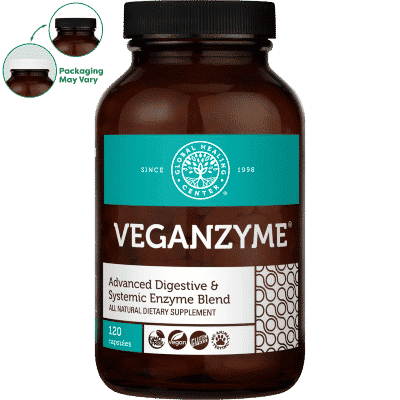
globalhealing.com
- Enzymes – 20 enzyme blend
- Strength – 1000 mg of enzymes per serving
- Added Ingredients – Organic gum acacia, organic rice hulls, vegetable capsule
Why buy: We like Global Healing’s VeganZyme supplement because it offers a potent blend of 20 different digestive enzymes that are completely plant-based and vegan. This supplement is designed to both aid in digestion and help boost your immune system and overall wellness. With no animal-derived products and even a vegan capsule, this is a digestive enzyme supplement that you can feel good about taking.
Best for Probiotic + Enzymes: Onnit Total Gut Health
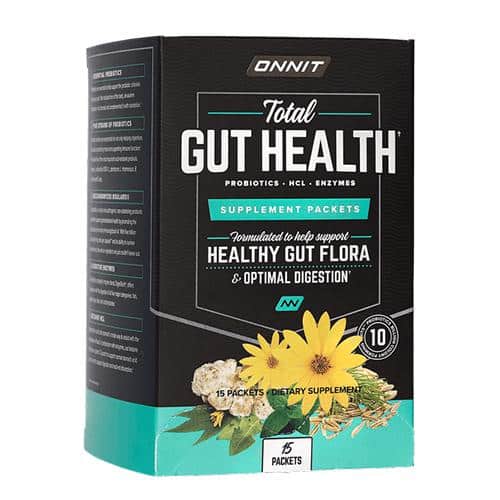
onnit.com
- Enzymes – 14 enzyme blend
- Strength – 500 mg of enzymes per serving
- Added Ingredients – Fennel seed powder, ginger root extract
Why buy: Onnit Total Gut Health supplements pack 14 different digestive enzymes into each packet, alongside 5 probiotic strains and 2 prebiotics. Key enzymes like protease help break down proteins, while amylase help with carbohydrates, and lipase breaks down dietary fats. We like that it also includes prebiotics and probiotics give your gut everything it needs. This supplement contains a full spectrum of enzymes to help you better digest and absorb a wider range of foods. Subscribe to save on each monthly order, or purchase a 30-day supply.
How Do Digestive Enzyme Supplements Work?
Digestive enzyme supplements take the place of our body’s natural digestive enzymes, helping to break down our macronutrients. Once these foods are broken down, the nutrients are absorbed into our bodies through the wall of the small intestine and then distributed through the bloodstream. Because they are meant to mimic our natural enzymes, the supplement must be taken before we eat. This way, they can work their magic as the food hits our stomach and small intestine. If we don’t take them with our food, they won’t be much use.
Being able to properly break down and digest your food is essential to your overall health and vitality. Absorbing your nutrients and passing your food is a part of the whole process of detoxification. If you find that you struggle with digestive issues, supplementing with one of the best digestive enzymes may be the thing that allows your body to heal and replenish itself. In fact, studies show that digestive enzyme supplementation may help in the management of certain gastrointestinal conditions or digestive disorders, including lactose intolerance and cystic fibrosis.
We always recommend talking to your doctor about your current GI issues, potential causes, and whether an enzyme replacement is a good choice for you.
How to Choose a Digestive Enzyme Supplement
When looking for the right digestive enzyme supplement for you, there are a few key pieces of information that you should always check.
What to Look For
Types of Enzymes – Always look at the number and types of enzymes included in a supplement. This is important because you want to choose a full, or broad, spectrum enzyme supplement that offers a range of different enzymes to help you break down different types of nutrients. The most important can include protease to help break down proteins, lipase to help with fats, and amylase to help digest carbohydrates. We recommend supplements with at least three types of enzymes.
Sourcing – While many digestive enzyme supplements used animal-derived enzymes in the past, we prefer plant-based enzymes because they are better for the environment, for animals, and for your body. In fact, plant-based enzymes work better in a wider range of pH environments, including the acids in your digestive system.
Quality – To ensure that you are only taking the best digestive enzymes, look for supplements that are vegan, non-GMO, and include all-natural ingredients. You can also look for ones that are backed by clinical research, formulated by doctors and nutritionists, and that are third-party lab tested for quality.
How to Read Labels
When comparing digestive enzyme brands, always read the label for these key pieces of info.
- Enzymes – While many brands utilize proprietary enzyme blends, they should list out each specific one included in the supplement in the supplement facts on the label.
- Amount per Serving – Look to see how many milligrams of the enzyme blend and other ingredients are included in each supplement serving. This will also tell you whether a serving is a single capsule or more than one.
- Other Ingredients – Always check to see what other nutrients or digestive supplements the brand adds to their capsules or powders. These can include things like fennel seed or ginseng root extract meant to aid in digestion.
- Suggested Use – Each brand will offer directions on how and when to take their digestive enzyme supplements. Typically, these are best taken before meals with water.
How to Take Digestive Enzymes
While each brand typically includes directions on how much of the digestive enzyme supplement to take, and when you should take it, they are generally meant to be taken before meals to allow the enzymes to help break down the foods you eat. Some supplements state that they should be taken up to three times daily, once before each meal, while others only recommend taking twice per day. Either way, you should always consult with your doctor about the best regiment for you and your digestive health.
Safety & Side Effects
Dietary enzyme supplements are generally considered to have a low risk of side effects, but certain mild side effects can occur in some cases. These can include gastrointestinal discomfort and diarrhea. These can occur especially from taking too much of a supplement, so be sure to take only the recommended dose. Additionally, it’s important to only take digestive enzymes from reputable brands to ensure that they are free from contaminants and any allergens. They may also interact with certain medications, so always be sure to consult with your physician if you plan to take a digestive enzyme supplement.
Madalyn Hughes has spent the majority of her professional career educating her clients and community on holistic nutrition and natural lifestyle modifications to enhance the quality of their lives. She has been educated as a Holistic Nutrition Practitioner and writing professionally for the past ten years. Madalyn currently lives in Myrtle Beach, South Carolina with her husband and three daughters where she works as a nutrition consultant, as well as a freelance nutrition writer.

 233k
233k  41k
41k  Subscribe
Subscribe 